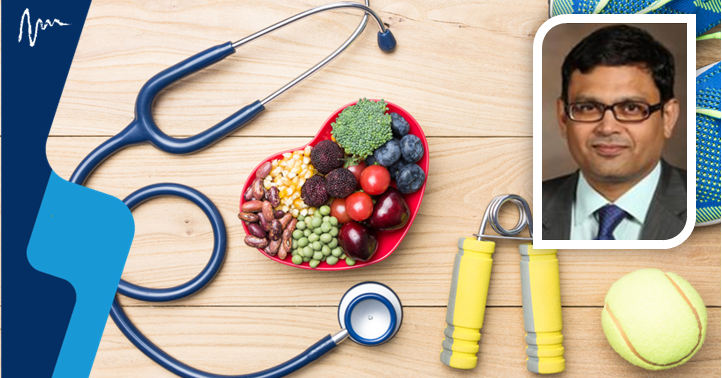Essential messages of 2019 AHA/ACC guideline for Indian doctors: Dr. Sundeep Mishra
M3 India Newsdesk Mar 28, 2019
Summary
Dr. Sundeep Mishra critiques the new ACC/AHA guidelines by...
- analysing the key messages- lifestyle modification being the main focus
- discussing the dismissal of aspirin for ASCVD primary prevention
- pointing out the overall limitations

Swarm in May is worth a load of hay,
A swarm in June is worth a silver spoon,
But a swarm in July is not worth a fly.
On March 17th 2019, in the just-completed American College of Cardiology (ACC) Meeting, the ACC and the American Heart Association (AHA) have released new guidance on the primary prevention of cardiovascular disease. This document was also widely endorsed by the American Association of Cardiovascular and Pulmonary Rehabilitation, the American Geriatrics Society, the American Society of Preventive Cardiology, and the Preventive Cardiovascular Nurses Association.
Essential messages of the guideline
- Lifestyle modification is better than any drug (particularly aspirin). Nearly 80% of all cardiovascular disease can be prevented with merely adopting correct lifestyle choices while drugs can affect only 10-20%.
- The earlier lifestyle change is brought about, the better is the result.
- The most important message- social determinants are far more important (4-8 times more) than actual health-care received. In other words, most of the superior health outcomes in the higher income populations are not merely due to higher access to health-care facilities but more due to better lifestyle opportunities; higher consumption of quality foods like fruits and vegetables and greater access to exercise facilities.
Focussing predominantly on lifestyle modification, the guidelines delve upon the following choices:
- Diet: Adults should consume a healthy diet that emphasises the intake of vegetables, fruits, nuts, legumes, whole grains, lean vegetable or animal protein, and fish and minimizes the intake of processed meats, refined carbohydrates, sodium, and sweetened beverages and avoidance of trans-fats.
- Physical activity: Adults should be encouraged to engage in at least 150 minutes/week of accumulated moderate-intensity physical activity or 75 minutes/week of vigorous-intensity physical activity. In this aspect, the guidelines focus on increasing physical activity rather than a specific type of exercise, which is left predominantly to the discretion of the individual.
- Obesity: For adults who are overweight or obese, counselling and caloric restriction are recommended for achieving and maintaining weight loss. Here again the emphasis is on weight control leaving the exact modality of achieving this control to the individual.
- Diabetes: Lifestyle modification- nutrition, exercise, weight, blood pressure, cholesterol control (and drug therapy only after that) is the first line management. If drugs are to be given, metformin, followed by SGLT-2 inhibitor or a GLP-1 receptor agonist are preferred based on their favourable effect on cardiovascular outcomes and mortality.
- Drugs: In the current guidelines, drugs have generally taken a back-seat. Particularly, aspirin (based on recent studies like ARRIVE, ASCEND, and ASPREE) is found to cause more harm than benefit; more bleeding risk than ASCVD benefit and therefore is no longer generally recommended for primary prevention (however, they could be considered based on higher CVD risk). Statins are to be prescribed based on the earlier lipid guidelines.
Limitations of the current guideline
- Some recommendations are based on deficient/inadequate data. For e.g. the guideline recommends that target diastolic blood pressure should generally be <80 mmHg. However, the diastolic BP level of <80 mmHg seems too severe at least for elderly and/or diabetic populations and in accordance, most European, American and International guidelines have kept the diastolic value above 80 mmHg. Thus this statement could have been qualified.
- Another example is that the document recommends replacing saturated fats with poly- and monounsaturated fats. However, the data supporting this argument is still not robust.
- Finally, there seems to be a faulty suggestion (if one reads just take home messages) that “every human being between the age of 40 and 75 should be taking statins.” At present, it is unclear whether this message is a departure from prior recommendations, a total breakdown of science and reason, or a mere misprint.
Disclaimer- The views and opinions expressed in this article are those of the author's and do not necessarily reflect the official policy or position of M3 India.
The writer, Dr. Sundeep Mishra is a Professor of Cardiology.
-
Exclusive Write-ups & Webinars by KOLs
-
Daily Quiz by specialty
-
Paid Market Research Surveys
-
Case discussions, News & Journals' summaries